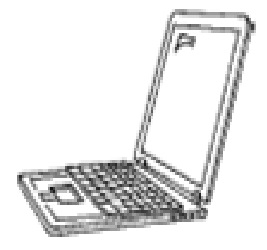Ustedes trasnochan todas las noches.
Tú y tus amigos hacen cosas diferentes ahora que hacían antes. Lee sobre sus actividades de hoy, y di que no las hacían antes, usando el imperfecto.
Ustedes no trasnochaban todas las noches.
You might also like to view...
Question: Qu'est-ce que c'est? / Qui est-ce? Answer: ________________
What will be an ideal response?
Write sentences to say if you do or do not have each of these things.

What will be an ideal response?
Interviews may be more or less formal. In highly formal interviews participants tend to stay closely within social and professional roles. They do little to acknowledge each other as unique individuals. Instead, the interviewer acts as the potential employer, the corrective supervisor, or whatever role is pertinent to the type of interview being conducted. The interviewee also acts from a defined
role: prospective employee, repentant subordinate, and so forth. The content of highly formal interviews tends to follow a standard format, often one that the interviewer has written to structure the interaction. Nonverbal communication provides further clues to formality: clothes, a formal meeting room, stilted postures, and a stiff handshake are all signs of formality. In contrast, informal interviews are more relaxed, personal, and flexible. The interviewer attempts to engage the interviewee as an individual, not just a person in a general role. In turn, the interviewee tends to communicate with the interviewer in more individualistic ways. Typically, informal interviews aren't as rigidly structured as formal interviews. The interviewer may have a list of standard topics (either memorized or written down), but those provide only guidelines, not a straightjacket for communication. Either participant may introduce unusual topics, and they may devote more time than planned to issues that arise. Informal interviews often include nonverbal cues such as smiling, relaxed postures, casual surroundings, and informal dress. According to the article, which of the following is NOT true about informal interviews? a. They can be described as flexible. b. Smiles and relaxed postures are common. c. They follow a standard format with written questions. d. Unusual topics may be introduced.
Which of the following sets is a part of the reading/writing situation?
A. books, students, laptops, topic B. purpose, topic, audience, writing situation C. reading situation, classroom, students, instructor D. purpose, diagrams, students, instructors